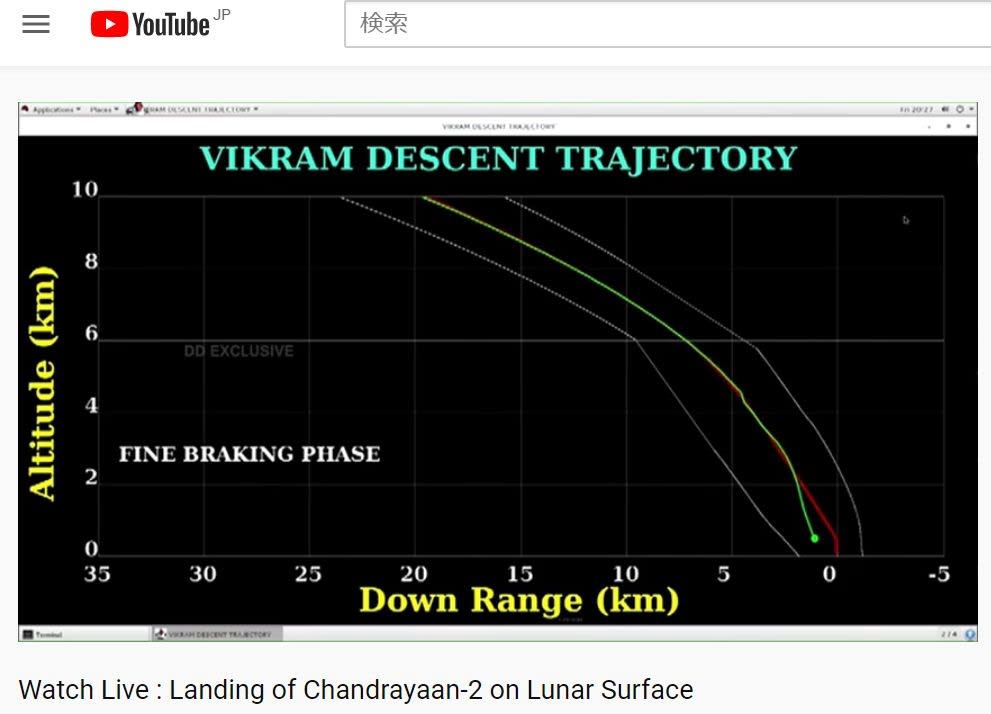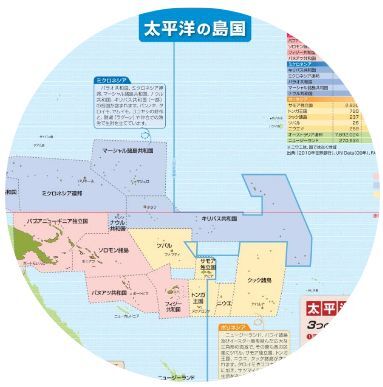https://www.isro.gov.in/chandrayaan2-latest-updates
上記URLにホバリングの最後での敗因の言い訳けと思われるUpdates文面が、週末明けに記録されていました。
以下はGoogle和訳そのままです。その下に原文を置いていますのでご確認ください。
ーーーーーーーーーーーーーーーーーーーーーーーーーーー
2019年9月7日
Chandrayaan-2ミッションは非常に複雑なミッションであり、ISROのオービター、ランダー、ローバーを組み合わせて月の未探査の南極を探索する以前のミッションと比較して、大きな技術的飛躍を表しています。
2019年7月22日にChandrayaan-2計画が発表されて以来、インドだけでなく全世界が大きな期待と興奮を持って、ある段階から次の段階への進展を見てきました。これは、月の1つの領域だけでなく、外気圏、表面、月の地下を1つのミッションで組み合わせたすべての領域を研究することを目的としたユニークなミッションでした。
オービターはすでに月の周りの意図した軌道に配置されており、月の進化と極域の鉱物と水分子のマッピングについての理解を深め、8つの最先端の科学機器を使用しています。オービターカメラは、これまでのどの月面ミッションでも最高解像度のカメラ(0.3m)であり、世界の科学界に非常に役立つ高解像度画像を提供します。
正確な打ち上げと任務管理により、計画された1年ではなく、ほぼ7年の長寿命が確保されました。ヴィクラムランダーは、35 kmの軌道から地上2 kmのすぐ下まで、計画された降下軌道をたどりました。Landerのすべてのシステムとセンサーは、この時点まで優れた機能を発揮し、Landerで使用される可変推力推進技術などの多くの新しい技術を証明しました。
ーーーーーーーーーーーーーーーーーーーーーーーーーーー
【ブログ主コメント】:まずは優秀なオービターのカメラで、月面にあるはずのランダーの姿を撮影して、AI積分処理で解像度を目いっぱいに上げて、ランダーの現状の姿を是非とも見せて頂きたい。大気が無いので燃え尽きてはいないはずです。激突で分解してしまった破片群でも良いから、見せて欲しい。
こうした具体的な証左をインド納税者も世界も大いに期待していると思います。この文章では技術者らしくない政治家的な弁解文面です。期待はずれです。

ーーーーーーーーーーーーーーーーーーーーーーーーーーー
September 7, 2019
Chandrayaan-2 mission was a highly complex mission, which represented a significant technological leap compared to the previous missions of ISRO, which brought together an Orbiter, Lander and Rover to explore the unexplored south pole of the Moon. Since the launch of Chandrayaan-2 on July 22, 2019, not only India but the whole world watched its progress from one phase to the next with great expectations and excitement. This was a unique mission which aimed at studying not just one area of the Moon but all the areas combining the exosphere, the surface as well as the sub-surface of the moon in a single mission. The Orbiter has already been placed in its intended orbit around the Moon and shall enrich our understanding of the moon’s evolution and mapping of the minerals and water molecules in the Polar Regions, using its eight state-of-the-art scientific instruments. The Orbiter camera is the highest resolution camera (0.3m) in any lunar mission so far and shall provide high resolution images which will be immensely useful to the global scientific community. The precise launch and mission management has ensured a long life of almost 7 years instead of the planned one year. The Vikram Lander followed the planned descent trajectory from its orbit of 35 km to just below 2 km above the surface. All the systems and sensors of the Lander functioned excellently until this point and proved many new technologies such as variable thrust propulsion technology used in the Lander. The success criteria was defined for each and every phase of the mission and till date 90 to 95% of the mission objectives have been accomplished and will continue contribute to Lunar science , notwithstanding the loss of communication with the Lander.
上記URLにホバリングの最後での敗因の言い訳けと思われるUpdates文面が、週末明けに記録されていました。
以下はGoogle和訳そのままです。その下に原文を置いていますのでご確認ください。
ーーーーーーーーーーーーーーーーーーーーーーーーーーー
2019年9月7日
Chandrayaan-2ミッションは非常に複雑なミッションであり、ISROのオービター、ランダー、ローバーを組み合わせて月の未探査の南極を探索する以前のミッションと比較して、大きな技術的飛躍を表しています。
2019年7月22日にChandrayaan-2計画が発表されて以来、インドだけでなく全世界が大きな期待と興奮を持って、ある段階から次の段階への進展を見てきました。これは、月の1つの領域だけでなく、外気圏、表面、月の地下を1つのミッションで組み合わせたすべての領域を研究することを目的としたユニークなミッションでした。
オービターはすでに月の周りの意図した軌道に配置されており、月の進化と極域の鉱物と水分子のマッピングについての理解を深め、8つの最先端の科学機器を使用しています。オービターカメラは、これまでのどの月面ミッションでも最高解像度のカメラ(0.3m)であり、世界の科学界に非常に役立つ高解像度画像を提供します。
正確な打ち上げと任務管理により、計画された1年ではなく、ほぼ7年の長寿命が確保されました。ヴィクラムランダーは、35 kmの軌道から地上2 kmのすぐ下まで、計画された降下軌道をたどりました。Landerのすべてのシステムとセンサーは、この時点まで優れた機能を発揮し、Landerで使用される可変推力推進技術などの多くの新しい技術を証明しました。
ーーーーーーーーーーーーーーーーーーーーーーーーーーー
【ブログ主コメント】:まずは優秀なオービターのカメラで、月面にあるはずのランダーの姿を撮影して、AI積分処理で解像度を目いっぱいに上げて、ランダーの現状の姿を是非とも見せて頂きたい。大気が無いので燃え尽きてはいないはずです。激突で分解してしまった破片群でも良いから、見せて欲しい。
こうした具体的な証左をインド納税者も世界も大いに期待していると思います。この文章では技術者らしくない政治家的な弁解文面です。期待はずれです。

ーーーーーーーーーーーーーーーーーーーーーーーーーーー
September 7, 2019
Chandrayaan-2 mission was a highly complex mission, which represented a significant technological leap compared to the previous missions of ISRO, which brought together an Orbiter, Lander and Rover to explore the unexplored south pole of the Moon. Since the launch of Chandrayaan-2 on July 22, 2019, not only India but the whole world watched its progress from one phase to the next with great expectations and excitement. This was a unique mission which aimed at studying not just one area of the Moon but all the areas combining the exosphere, the surface as well as the sub-surface of the moon in a single mission. The Orbiter has already been placed in its intended orbit around the Moon and shall enrich our understanding of the moon’s evolution and mapping of the minerals and water molecules in the Polar Regions, using its eight state-of-the-art scientific instruments. The Orbiter camera is the highest resolution camera (0.3m) in any lunar mission so far and shall provide high resolution images which will be immensely useful to the global scientific community. The precise launch and mission management has ensured a long life of almost 7 years instead of the planned one year. The Vikram Lander followed the planned descent trajectory from its orbit of 35 km to just below 2 km above the surface. All the systems and sensors of the Lander functioned excellently until this point and proved many new technologies such as variable thrust propulsion technology used in the Lander. The success criteria was defined for each and every phase of the mission and till date 90 to 95% of the mission objectives have been accomplished and will continue contribute to Lunar science , notwithstanding the loss of communication with the Lander.















